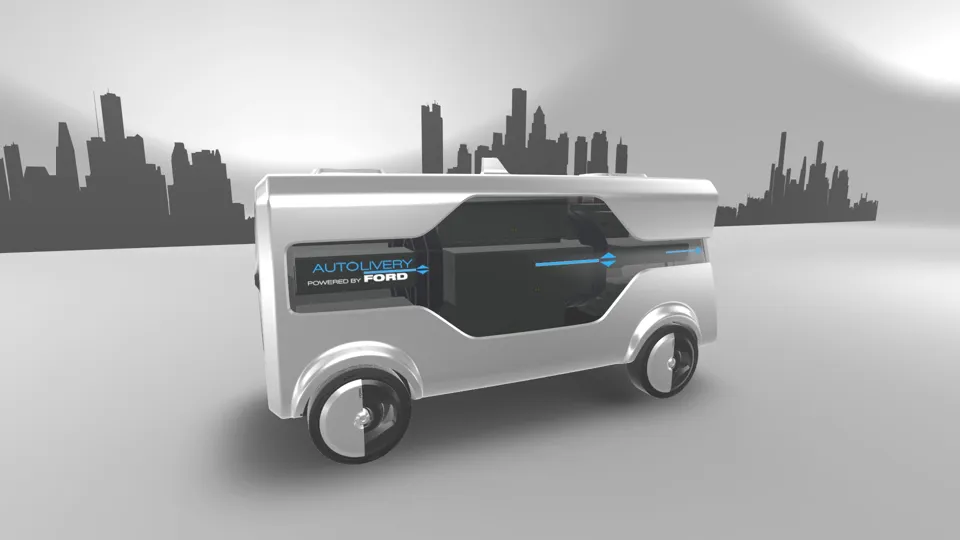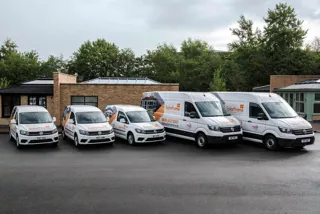John Maslen finds that less is more in the future of commercial fleet vehicles.
New technology and mobility solutions are having a dramatic impact on how we use CVs for deliveries and now the clean air demands of many UK cities will promote even greater change.
Commercial vehicles are often seen as the workhorses of the UK economy, but they are also at the sharp end of the mobility revolution affecting the fleet market.
Despite their workmanlike exterior, most van and truck fleets are now fitted with cutting edge telematics systems to monitor and manage vehicles more effectively.
This is just the start of a fundamental change in the way commercial vehicle fleets are managed and operated.
Van and truck fleets are run with a focus on maximising efficiency and minimising cost. New technology and mobility solutions will mark a step change in what can be achieved.
The first stage of change will come in the next few years, with the arrival of low emission zones in a number of UK cities.
These could require a fundamental change in strategies, particularly in the delivery industry.
Currently, vehicles tend to drive from an external depot, straight to customer premises in towns and cities before returning to base with an empty load bay.
The Michelin Movin’ On conference earlier this year heard that between 15% and 25% of all miles driven in Europe is by empty trucks.
An alternative already being trialled is for companies to deliver goods to a shared out-of-town hub, with the last mile delivery being completed by a single supplier using zero-emission vehicles, from electric vans to pedal cycles.
Out-of-town trucks then back-haul waste and returned goods.
This approach has been successfully implemented in London by Gnewt Cargo, which plans to expand its business model into other towns and cities.
Independent research which monitored its delivery programme concluded that electric vans can be used in real-world market conditions to support profitable business operations in cities.
Speaking at a Greater London Authority forum, Jacques Leonardi from the University of Westminster, said: “The major message is ‘go ahead’, you can earn money with electric vehicles and urban consolidation in the classic parcel distribution logistics supply chain in the UK under real market conditions.
“We reduced the cost per parcel for final delivery and the main effect is a reduction of congestion.”
But this is just the start, argues William Sachiti, the founder of The Academy of Robotics, which predicts the development of autonomous vehicles will revolutionise the commercial vehicle market.
The Academy of Robotics is building Kar-Go, a driverless delivery vehicle which aims to remove 98% of the human costs associated with the last mile of delivery.
He said: “The entire auto industry is ripe for the disruption, this literally means all of it – from the smallest car to the largest commercial trucks.
“The haulage industry will not escape this change. We are likely going to see long distance deliveries, currently completed by diesel trucks driven by humans, all replaced by autonomous trucks which need no rest.”
The first trials of autonomous delivery vehicles have taken place in the Royal Borough of Greenwich as part of the Greenwich Automated Transport Environment (Gateway) project.
Business Minister Claire Perry said: “The Gateway project takes us another step closer to seeing self-driving vehicles on UK roads, and has the potential to reduce congestion in urban areas while reducing emissions.
"Backed by Government, this project firmly establishes the UK as a global centre for developing self-driving innovation.”
CargoPod, developed by Oxbotica as part of the Gateway Project, is guided by autonomy software system Selenium, which enables real-time, accurate navigation, planning and perception in dynamic environments.
The pod is able to carry a total of 128kg of groceries at a time.
Parcel delivery giant Hermes recently launched an innovative testing programme for the use of self-driving delivery robots in London in partnership with Starship Technologies, while Ford says self-driving vans could quickly and efficiently transport everything from groceries, to urgently needed medical supplies on the ground.
Its Autolivery concept also proposes flying drones that would leave a base vehicle to complete the final few yards to the customer’s door, especially for areas where parking is impractical or unsafe.
Will Dawson, a principal consultant at LCP Consulting, argues that drone technology is at least a decade away and even then will be little more than a niche service particularly in high-rise cities like London.
However, other analysts predict commercial drones will be a common site within six years in roles historically reserved for road transport, such as package and food deliveries.
In addition to autonomous drones, the same technology that enables remote control of planes on battlefields will allow the swift introduction of driverless trucks to the UK’s roads, experts claim.
With the introduction of remote driving technology, drivers would be able to operate a vehicle from anywhere.
Starsky, which makes robotics for this type of driving, believes the result will be safer roads due to less driver fatigue.
However, there is a balance to be struck between efficiency and public trust, especially for well-known brands.
Jim Bruce, chief energy policy officer for UPS, told the Michelin Movin’ On conference that the public trusts its brown-uniformed drivers and that some are even internet celebrities.
He added that UPS considers drivers its biggest asset, so as the company explores automation, from self-driving vehicles to drone deliveries, these new technologies will always be considered as a helper for the driver, not a successor.
In the UK, a first step towards autonomous trucks will start next year, in an £8.1 million trial of ‘platooning’ on UK roads.
Up to three lorries will travel in convoy, with acceleration and braking controlled by the lead vehicle.
While all lorries will always have a driver ready to take control at any time, two of them will be completely hands-off until they need to leave the platoon.
Transport minister Paul Maynard said: “Advances such as lorry platooning could benefit businesses through cheaper fuel bills and other road users thanks to lower emissions and less congestion.”
Jim O’Sullivan, Highways England chief executive, said: “The trial has the potential to demonstrate how greater automation of vehicles – in this instance, HGVs – can deliver improvements in safety, better journeys for road users and reduction in vehicle emissions.”
If successful, the Government says the technology could have major benefits for motorists and businesses in the UK.
A row of lorries driving closer together could see the front truck pushing the air out of the way, making the vehicles in the convoy more efficient, lowering emissions and improving air quality, it says.
TRL – the Transport Research Laboratory – will carry out the trial, with funding provided by the Department for Transport (DfT) and Highways England.
It follows a Government-funded feasibility study which recommended a trial to examine the benefits and viability of platooning.
The trial will be carried out in three phases, with the first focusing on the potential for platooning on major UK roads.
Initial test track-based research will help decide details such as the distance between vehicles and on which roads the tests could take place.
Christopher Snelling, head of national policy, at the Freight Transport Association (FTA), said: “The sooner the trial takes place, the sooner the UK logistics industry, which represents 11% of the UK’s non-financial business economy, can know if this will be the right route for the future.
“Technology is the solution to emissions, road safety and managing costs. Platooning could be an opportunity to optimise logistics on the road – we need to know if it is the way forward as soon as possible.”
Similar trials have already been successfully carried out in Europe and the United States.
Last year, more than a dozen self-driving trucks from DAF, Daimler, Iveco, MAN, Scania and Volvo completed a successful platooning trial with a drive across Western Europe.
Solutions and challenges in urban delivery
Mutualise deliveries
Companies will collaborate, encouraged by legislation and incentives, to optimise routes and deliveries. However, the collaboration needs to be economically viable for all.
Share data
By sharing data, providers can create efficiencies. For example, rather than multiple vehicles visiting the same office every day, one company can be tasked with all deliveries in an area, although providers will try to ring fence the most lucrative routes.
Common distribution centres
To optimise sustainable deliveries, companies could build shared distribution centres. The key is finding cost-effective locations and partners need a model that is profitable before they will commit.
Source: Michelin Movin’ On




















Login to comment
Comments
No comments have been made yet.